Bibliometric and Visual Analysis of Knee Arthroscopic Surgery
by Cheng-Tse Lee1,2, Yu-Lung Wu3, Ren-Fang Chao4*
1Department of Information Engineering, I-Shou University, Kaohsiung City 84001, Taiwan
2Division of Orthopaedics, Zuoying Armed Forces General Hospital, Kaohsiung City 813204, Taiwan
3Department of Information Management, I-Shou University, Kaohsiung City 84001, Taiwan
4Department of Sports Technology and Leisure Management, I-Shou University, Kaohsiung City 84001, Taiwan
*Corresponding author: Ren-Fang Chao, Department of Sports Technology and Leisure Management, I-Shou University, Kaohsiung City 84001, Taiwan
Received Date: 31 March 2025
Accepted Date: 07 April 2025
Published Date: 09 April 2025
Citation: Lee CT, Wu YL, Chao RF (2025) Bibliometric and Visual Analysis of Knee Arthroscopic Surgery. J Surg 10: 11298 https://doi.org/10.29011/2575-9760.011298
Abstract
Knee arthroscopy is a widely applied minimally invasive technique in modern orthopedic surgery, utilized for diagnosing and treating various knee joint disorders. In recent years, research on this technique has gained significant attention in both clinical and academic fields, covering aspects such as technological advancements, postoperative recovery, complication management, and long-term efficacy. By employing bibliometric analysis and visualization techniques, this study systematically organizes literature related to knee arthroscopy to quantify research trends and evaluate the academic influence of different institutions, scholars, and countries. This study utilizes VOSviewer to perform keyword co-occurrence analysis, institutional collaboration networks, cocitation relationships among researchers, and journal co-citation analysis to identify the core research directions and developmental trajectories in this field. The findings of this research not only help scholars understand the evolving trends in knee arthroscopy but also provide valuable references for future studies.
Keywords: Bibliometrics; Knee arthroscopy; Orthopedics; Visualization analysis; VOSviewer
Introduction
Knee arthroscopy is a minimally invasive surgical technique widely used for diagnosing and treating various knee joint disorders. With advancements in endoscopic technology and surgical instrumentation, knee arthroscopy has gradually replaced traditional open surgery, becoming a preferred treatment option for meniscal injuries, ligament reconstruction, cartilage repair, and synovitis [1]. This surgical approach not only reduces postoperative pain and complications but also shortens the recovery period, allowing patients to return to normal activities more quickly. As its clinical applications continue to expand, research on the indications, surgical techniques, and postoperative outcomes of knee arthroscopy has significantly increased. From a historical perspective, the application of knee arthroscopy can be traced back to the early 20th century [2]. However, it was not until advancements in optical and imaging technologies that its use became widespread. In recent years, numerous studies have focused on the efficacy, complications, postoperative rehabilitation, and comparisons with alternative treatment methods for knee arthroscopy [3]. Furthermore, with advancements in Artificial Intelligence (AI), machine learning, and biomechanical analysis, these technologies have been increasingly applied to preoperative planning, intraoperative assistance, and postoperative evaluation in arthroscopic surgery, leading to more precise clinical diagnoses [4]. In particular, the integration of AI and machine learning in medical imaging and surgical navigation [5] has enabled surgeons to diagnose joint pathologies more efficiently and refine surgical strategies accordingly.
However, despite the significant advancements in the clinical and research aspects of knee arthroscopy, bibliometric analysis in this field remains relatively limited [6]. Bibliometric analysis enables the statistical and visual assessment of large-scale academic data, evaluating research trends, academic influence, and international collaborations. This approach further elucidates the development trajectory and future directions of the scholarly community in this domain [7]. Through bibliometric analysis, it is possible not only to identify highly influential researchers and institutions but also to examine collaboration patterns between different countries and research organizations. Additionally, methods such as keyword co-occurrence analysis, journal co-citation analysis, and author collaboration networks can highlight the core topics and research evolution within this field.
This study employs visual bibliometric methods to analyze the academic development trends in the field of knee arthroscopy surgery. It explores key researchers, institutions, and international collaboration networks within the research domain to identify gaps in past studies and provide directions for future advancements.
Methodology
Knee arthroscopy has become a significant research focus in modern orthopedic surgery as a minimally invasive technique [8]. To explore the academic development trends in this field, this study employs bibliometric analysis for a systematic evaluation. The data source is the Web of Science (WoS) Core Collection, which encompasses multiple academic disciplines, including medicine, biological sciences, and engineering, ensuring access to high-quality research literature [9]. The search criteria include keywords such as “Knee Arthroscopy” and “Arthroscopic Surgery,” with document types restricted to journal articles and conference papers to ensure the representativeness and reliability of the data. Additionally, to maintain the completeness of the analysis, the search scope spans from 1864 to 2024, allowing for an assessment of research trends and developments over this period. Data processing and visualization analysis were conducted using VOSviewer software [7], a tool specifically designed for bibliometric research. VOSviewer facilitates the construction and visualization of academic networks, including co-authorship analysis, keyword co-occurrence analysis, journal co-citation analysis, and document co-citation analysis. By computing cooccurrence frequency and link strength, VOSviewer effectively identifies the core topics and academic collaboration networks within the research field. Additionally, Bibliometrix software [10] was employed as a supplementary analytical tool to provide a comprehensive assessment of academic trends. The data screening process involved the removal of irrelevant literature, such as conference abstracts, book reviews, and articles lacking full-text access. Furthermore, keyword standardization was performed to unify different terminologies, ensuring consistency in the analysis, such as standardizing “Knee Arthroscopy” and “Arthroscopic Surgery” as equivalent terms. Subsequently, co-citation analysis was applied to identify key scholars and foundational literature in this field, while institutional collaboration analysis was utilized to examine the interrelationships among major research institutions [11]. The core analytical methods included co-occurrence analysis, co-authorship analysis, co-citation analysis, and journal co-citation analysis [12].
Data processing and visualization analysis were conducted using VOSviewer software, a tool specifically designed for academic network analysis. VOSviewer facilitates the construction and visualization of various bibliometric relationships, including coauthorship analysis, keyword co-occurrence analysis, journal co-citation analysis, and document co-citation analysis. By calculating the strength of association between publications, VOSviewer accurately constructs academic networks and presents core research themes and development trends in a twodimensional visualization. In this study, VOSviewer’s clustering techniques were utilized to evaluate the structure and impact of academic networks through bibliographic coupling, co-authorship analysis, and co-citation analysis [13]. These methods provide a comprehensive assessment of the research landscape, identifying key contributors and influential publications in the field.
VOSviewer constructs a similarity matrix using the co-occurrence matrix [14] and further refines the distance calculation between objects through the Strength of Association method. This technique enables accurate representation of relative relationships among different research entities in a two-dimensional visualization. Additionally, the Weighted Euclidean Distance [15] is applied to enhance the accuracy of data analysis. Furthermore, VOSviewer provides three distinct visualization modes: Label View, Density View, and Cluster Density View, allowing researchers to examine the structure and evolution of academic networks from multiple perspectives. These visualization techniques facilitate the identification of key research themes, collaborative relationships, and emerging trends in the field of knee arthroscopy surgery. To ensure data accuracy, this study applied data standardization by eliminating duplicate entries and employing keyword normalization [10] to consolidate different spelling variations of keywords into the same category. These methodological refinements enable the study to effectively present the academic development trends in the field of knee arthroscopy surgery and further explore patterns of academic collaboration and research impact within this domain.
Results
This study employs bibliometric methods to analyze literature related to knee arthroscopy surgery and utilizes visualization techniques to construct academic network diagrams, aiming to reveal the development trends and academic influence in this field. The analysis results indicate that the core academic groups in knee arthroscopy research primarily consist of specific highimpact journals, research institutions, and scholars. These elements collectively shape the academic development trajectory of this field. Additionally, through citation analysis and co-citation analysis, it is possible to identify the most influential research findings and their academic contributions within this domain
Bibliometric Analysis of International Research Collaboration Networks
Figure 1 illustrates the international collaboration network in the field of arthroscopic surgery research. The significance of this collaboration network lies in the fact that the size of the nodes represents the number of publications contributed by each country in this field, while the connections between nodes reflect the cooperative relationships among different countries. The color distinctions correspond to the citation weight of each country, with warm colors indicating higher academic influence and cool colors representing relatively lower impact. From an overall structural perspective, the figure reveals the distribution and intensity of international collaboration in arthroscopic surgery research, highlighting the major collaborative groups.
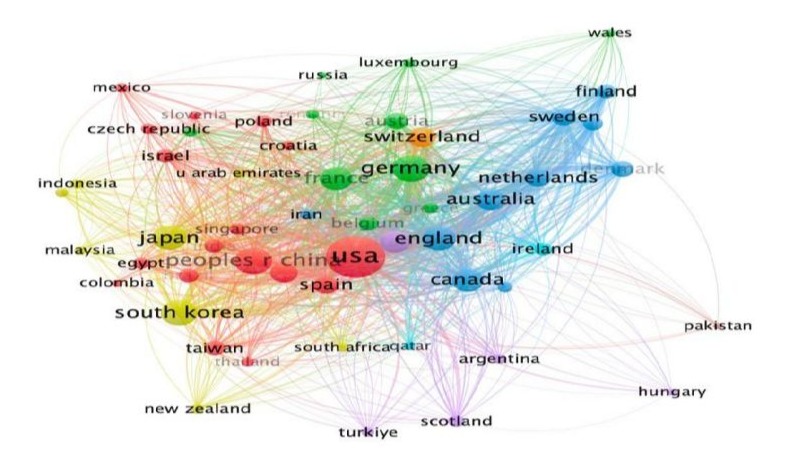
Figure 1: Visualizes the research collaboration links between countries.
The analysis results identified seven major collaboration groups. The United States, as the country with the highest number of publications (Group 1, red), has established close collaborations with the United Kingdom, Canada, Australia, Germany, France, Japan, and South Korea. These countries form the most influential research network in this field [16]. Additionally, another significant collaboration group (Group 2, blue) includes Sweden, the Netherlands, Finland, Ireland, and Belgium, primarily concentrated in the European region. In the green group (Group 3), Switzerland, Austria, Russia, and Luxembourg have formed a regional research network [17]. The yellow group (Group 4) consists of China, Taiwan, Singapore, Malaysia, and Thailand [18]. Another noteworthy collaboration group (Group 5, purple) includes Spain, Italy, Brazil, and Argentina, highlighting the connections between Southern Europe and South America in this research field. Furthermore, Turkey, Iran, and the United Arab Emirates form the orange group (Group 6), showing a gradual increase in academic collaboration over the past decade [19]. Lastly, Group 7 (gray) consists of only a few countries, such as Pakistan and Hungary, where academic collaboration links remain relatively scattered, indicating room for further improvement in this research area.
In addition to international collaborations, Figure 2 further analyzes the number of publications by each country, along with citation counts and linkage strength. The results indicate that the United States has the largest research output in this field, with a total of 4,296 publications, and has received the highest number of citations and linkage strength, highlighting its central role in arthroscopic surgery research. However, it is noteworthy that some countries have a relatively high number of publications but lower citation counts and linkage strength. For example, China has published 932 articles, but its total citations and linkage strength are lower compared to the United Kingdom (696 publications) and Germany (933 publications). A similar trend is observed in Italy and Japan, where research output remains relatively stable (513 and 706 publications, respectively), but their overall academic impact has not reached the same level as that of the United Kingdom or Germany.
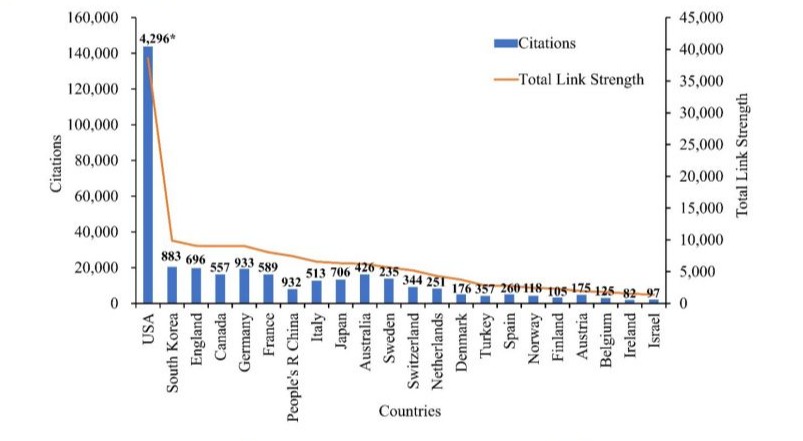
Note: * The numbers above the bar chart indicate the number of academic articles published by each country.
Figure 2: Citation counts and link strength of publications by country.
Author Collaboration Network Analysis and Interdisciplinary Cooperation
Figure 3 illustrates the author collaboration network in the field of knee arthroscopy surgery, visualizing the strength of collaboration among scholars over time using a color gradient from blue to yellow. Among the prominent researchers in this field, Dr. Stephen S. Burkhart is a well-recognized expert in shoulder arthroscopy, particularly known for his advancements in rotator cuff repair techniques. He pioneered the “Suture Bridge” technique, which provides enhanced stability for rotator cuff tear repairs [20], reducing the risk of postoperative re-tears. Furthermore, his contributions to surgical treatment for shoulder instability, especially in Bankart repair and managing glenoid bone loss [21], have significantly improved postoperative outcomes for such patients. Another key researcher, Dr. Marc J. Philippon, specializes in hip arthroscopy, with outstanding contributions to the treatment of Femoroacetabular Impingement (FAI) and other hip-related disorders. His research has also emphasized the correlation between femoroacetabular impingement and hip injuries in athletes [22], providing valuable insights into both the prevention and management of these conditions.
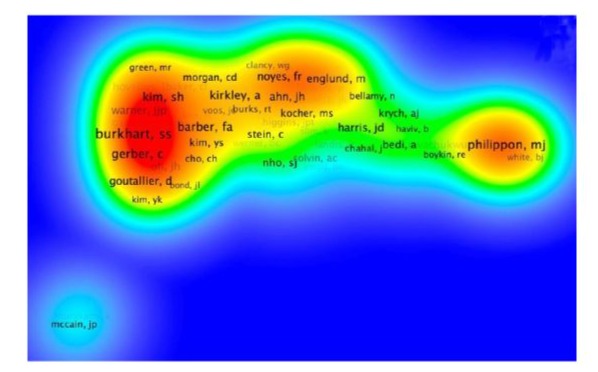
Figure 3: Visualization of co-citation density.
Figure 4 illustrates the network of academic collaborations in the field of knee arthroscopy research. Among the most influential scholars in this domain, S. S. Burkhart stands out, with a total of 1,570 citations and the highest total link strength of 28,596. M. J. Philippon’s publications have accumulated 1,161 citations, with a link strength of 23,010. Other notable researchers in this field include P. Boileau (1,237 citations, 22,687 link strength), C. Gerber (1,091 citations, 21,141 link strength), and J. W. T. Byrd (1,060 citations, 18,481 link strength). In contrast, J. P. McCain primarily specializes in Temporomandibular Joint (TMJ) arthroscopy rather than knee arthroscopy. His research focuses on TMJ diagnostics, minimally invasive surgical techniques, arthroscopic procedures, joint replacement surgery, and applications in oral and maxillofacial surgery [23].
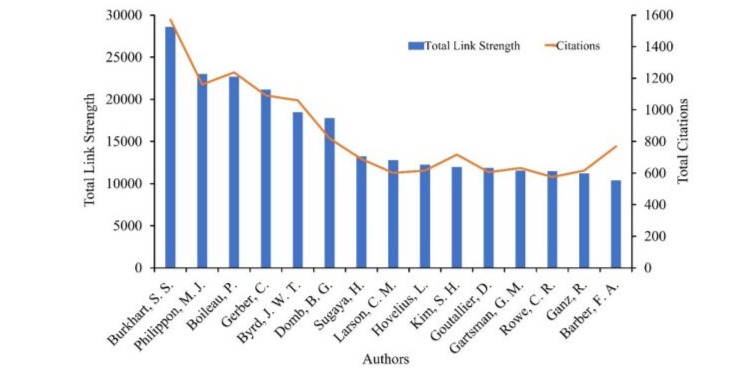
Figure 4: Bibliometric analysis of the most active co-authorship relationships.
Journal Collaboration Network Analysis and Academic Influence
Figure 5 illustrates the collaboration and citation relationships among academic journals in the field of knee arthroscopy surgery research. The colored circles in the figure represent different academic journals, with their sizes reflecting the citation weight of each journal within the field. This visualization analysis categorizes the journals into several distinct groups based on their distribution, primarily identifying three major clusters: red, blue, and green.
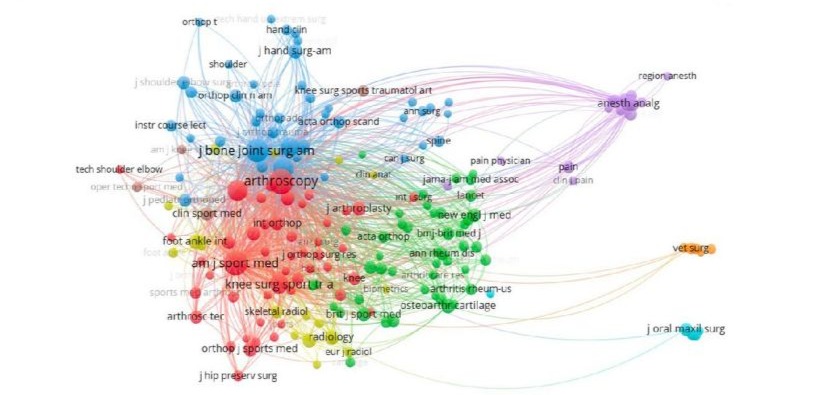
Figure 5: Visualizes the research collaboration linkages among journals.
The red cluster primarily consists of core journals such as Arthroscopy: The Journal of Arthroscopic & Related Surgery, The American Journal of Sports Medicine, and Knee Surgery, Sports Traumatology, Arthroscopy. These journals have a significant influence in the fields of sports medicine and arthroscopic surgery, focusing on innovations in knee and shoulder arthroscopy techniques and their clinical applications [16]. The blue cluster includes The Journal of Bone and Joint Surgery (American Volume) and Journal of Shoulder and Elbow Surgery, which cover a broader range of orthopedic research. These journals are closely related to surgical techniques, rehabilitation strategies, and biomechanical analysis in arthroscopic surgery [24]. The green cluster comprises journals such as Osteoarthritis and Cartilage, Annals of the Rheumatic Diseases, and The New England Journal of Medicine. These journals focus on research related to osteoarthritis, cartilage regeneration, and the treatment of joint diseases, influencing the long-term efficacy and disease management of knee arthroscopic surgery [25].
Additionally, the purple cluster includes Anesthesia & Analgesia and Pain Physician, which primarily focus on pain management and anesthesia techniques related to surgical procedures. These journals are closely associated with perioperative pain control strategies in knee arthroscopic surgery [26]. The orange small cluster consists of journals such as Veterinary Surgery, highlighting the role of animal experiments in the development of knee arthroscopy techniques [27]. Highly co-cited core journals hold significant academic influence, providing guidance on research directions and trends within the scientific community.
Figure 6 illustrates that Arthroscopy: The Journal of Arthroscopic & Related Surgery is the most influential journal in the field of knee arthroscopy research [28]. Articles published in this journal have been cited a total of 47,003 times, with a total link strength of 36,427.80, demonstrating its role as a core academic source in this field. Additionally, The American Journal of Sports Medicine (39,163 citations, link strength:31,221.89) and The Journal of Bone and Joint Surgery (American Volume) (29,413 citations, link strength: 25,167.24) are also key journals in this domain. These journals encompass research on innovative knee arthroscopy techniques, postoperative rehabilitation strategies, and clinical study outcomes, highlighting their significant impact in the field.
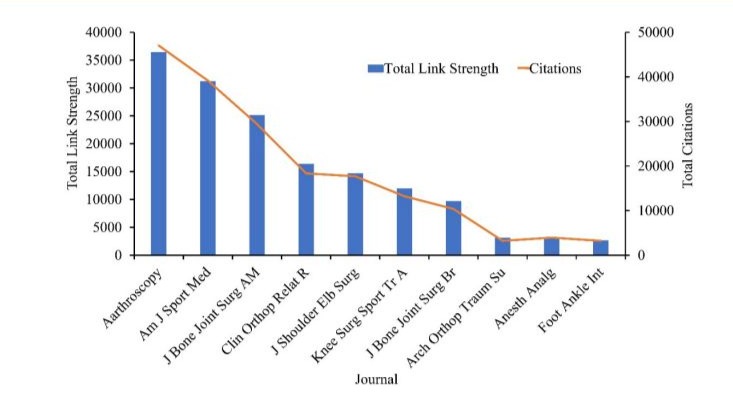
Figure 6: Distribution of journals publishing research related to arthroscopy.
Dynamic Changes in Keyword Co-occurrence and Temporal Visualization Analysis
Figure 7 visualizes high-frequency co-occurring keywords, categorizing them into different groups based on search frequency using color differentiation. The red group contains the most frequently discussed terms, such as arthroscopy, osteoarthritis, and knee, highlighting core topics related to knee arthroscopy surgery [29]. The green group represents the second most frequent keywords, including knee surgery, inflammation, and efficacy, which are mainly associated with the clinical efficacy and postoperative management of knee arthroscopy [30]. The blue group consists of keywords like femoroacetabular impingement, instability, and Bankart repair, primarily covering arthroscopic treatments related to the shoulder and hip joints [31]. The yellow group includes terms such as rotator cuff repair, arthroscopic repair, and integrity, which are relevant to shoulder surgeries and tendon repair [32]. The purple group contains less frequently appearing keywords, such as children, infection, and performance, indicating relatively peripheral but still academically valuable topics in this field.
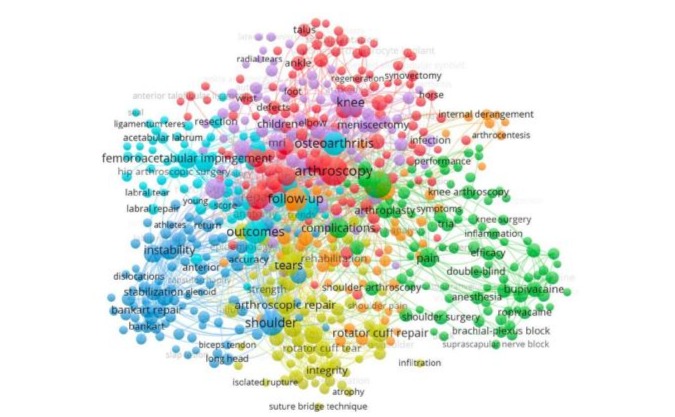
Figure 7: Network Visualization of Keyword Co-occurrence.
Structural analysis of keywords can reveal key research topics in the field of knee arthroscopy surgery [29]. In Figure 8, different colors and circle sizes represent the frequency of keyword occurrences at different periods. The color gradient from light yellow to dark blue corresponds to the research trends from early studies (2012) to more recent developments (2018), effectively illustrating the temporal evolution of academic advancements.
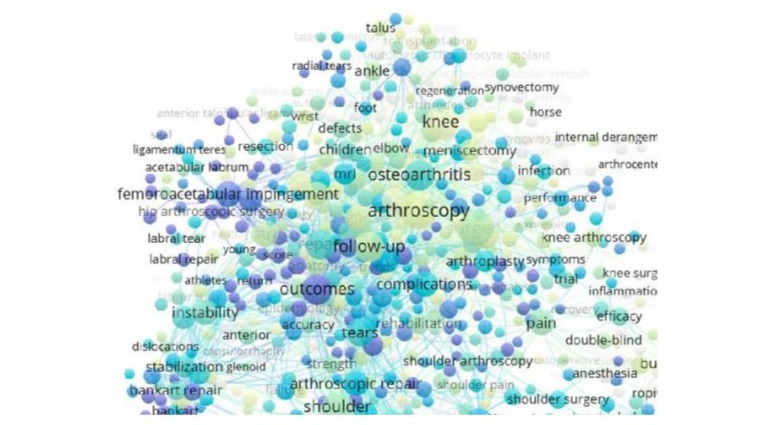
Figure 8: Overlay Visualization of Keyword Co-occurrence.
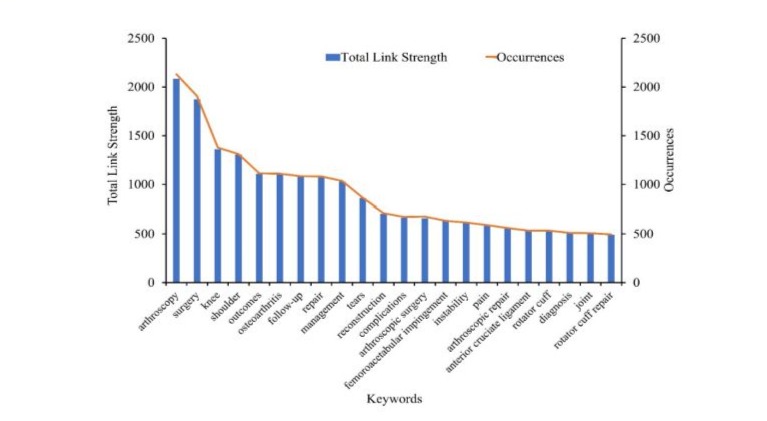
Figure 9: Keywords with the highest occurrence frequency and total link strength in arthroscopic surgery research.
According to the results of the temporal visualization, the research topics on knee arthroscopy have undergone significant changes over different periods. Earlier studies (from 2012 to 2014) primarily focused on keywords such as arthroscopy, osteoarthritis, and femoroacetabular impingement, indicating that research during this period emphasized the application of arthroscopic techniques in diagnosing and treating joint diseases. Additionally, the frequent occurrence of terms such as instability, Bankart repair, and labral tear suggests that arthroscopic surgery for the treatment of shoulder and hip joint disorders was a major research focus at that time [33]. From 2015 to 2016, the focus of keyword co-occurrence gradually shifted toward complications, rehabilitation, and outcomes, reflecting an increased academic interest in the effectiveness of knee arthroscopy and postoperative recovery [34]. During this period, keywords such as pain, efficacy, and inflammation also emerged, indicating that postoperative pain management and rehabilitation strategies had become key research priorities. Furthermore, the increased occurrence of keywords related to arthroplasty suggests that the application of knee arthroscopy in the treatment of osteoarthritis has garnered greater attention. From 2017 to 2018, the research focuses further expanded to include keywords related to postoperative pain management, such as bupivacaine, ropivacaine, and brachial plexus block. This shift indicates an increasing emphasis on optimizing anesthesia techniques and postoperative pain control in the field. A further analysis of keyword citations and link strength is presented in Figure 9. The results indicate that arthroscopy (2,131 occurrences, 2,085.00 link strength) and surgery (1,906 occurrences, 1,873.00 link strength) are the most influential keywords in this field, closely associated with the fundamental techniques and applications of knee arthroscopic surgery. However, some keywords, despite their high occurrence frequency, did not exhibit strong link strength. For example, tears (863 occurrences, 860.00 link strength) and complications (674 occurrences, 664.00 link strength) demonstrated relatively weaker influence within the academic network.
Discussion
Analysis of Academic Research Performance and Collaborative Influence
Bibliometric analysis, which constructs graphical databases of various citation indicators, has been widely applied in the field of library and information science [35]. The widespread adoption of the global network has eliminated geographical barriers between countries, enabling researchers to engage in academic collaboration more conveniently and thereby transforming the patterns of citation analysis. Due to the growth of international scientific cooperation, the traditional academic world-system theory has undergone changes, leading to the emergence of a new phenomenon in the flow of academic knowledge. This trend highlights the importance of cross-border knowledge exchange and academic collaboration, facilitating researchers from different countries to participate collectively and challenge existing academic frameworks.
The analysis results indicate that the United States holds a central position in the field of knee arthroscopy research, having established a strong international collaboration network with European countries, China, Japan, South Korea, and Australia [18]. These collaborative relationships suggest that the enhancement of academic influence is not solely dependent on individual national research investments but is also closely linked to the depth and breadth of international cooperation. Global academic collaboration not only facilitates resource sharing but is also considered one of the most cost-effective ways to drive knowledge advancement.
In the field of knee arthroscopy, numerous academic institutions and professional organizations have played a crucial role. The American Orthopaedic Society for Sports Medicine (AOSSM) has long been dedicated to advancing research and development in sports medicine and arthroscopic techniques. Through educational programs and international collaborations, AOSSM has expanded its influence in this domain [36]. Additionally, the International Society of Arthroscopy, Knee Surgery, and Orthopaedic Sports Medicine (ISAKOS) has also played a key role in fostering collaboration among scholars from different regions and facilitating academic exchanges, thereby driving continuous progress in this field [37].
According to the results of journal and author analyses, there is intense competition among global research institutions, reflecting the dynamism and impact of academic research in this field. This study validates bibliometric analysis as an effective tool for exploring international academic collaboration and identifying core research groups. The United States, as the central country in this domain, not only leads in technological innovation but also plays a pivotal role in integrating academic resources and fostering international collaborations. The formation of this global academic network has laid a solid foundation for the further development of knee arthroscopy surgery.
Application of Robust Structural Mapping and Visualization Analysis Models in Knee Arthroscopy Research
Bibliometric analysis indicates that the most highly cited articles have had a profound impact on current research. Co-authorship analysis highlights that several highly cited scholars in the field of knee arthroscopy surgery hold key positions in the academic community. Burkhart, S. S. has received significant attention for his research on arthroscopic shoulder surgery techniques and repair methods. His contributions have advanced rotator cuff repair, particularly in the development of minimally invasive surgical techniques and their clinical applications [38]. His academic contributions primarily focus on improving repair techniques, enhancing surgical success rates, and exploring optimal postoperative rehabilitation strategies [39]. Philippon, M. J. has focused on hip arthroscopy, particularly making breakthroughs in the clinical application of treating Femoroacetabular Impingement (FAI) and labral tears [40]. His research demonstrates that precise hip arthroscopic techniques not only reduce postoperative complications but also improve long-term functional outcomes, providing better treatment options for both athletes and general patients. Furthermore, his studies on postoperative rehabilitation protocols have further advanced the field, enhancing the overall effectiveness of clinical treatments [41].
Andrews, J. R. has made significant contributions to sports medicine and knee arthroscopy, particularly in the advancement of Anterior Cruciate Ligament (ACL) reconstruction techniques [42]. His research has not only propelled surgical innovations but also enhanced rehabilitation outcomes for athletes, reducing postoperative complications and further optimizing treatment strategies. His findings indicate that ACL reconstruction using anatomically guided techniques effectively improves joint stability and lowers the risk of reinjury postoperatively [43]. The journal analysis results indicate that Arthroscopy is the most influential journal in the field of knee arthroscopy, garnering a significant number of citations and demonstrating strong influence in cocitation analysis [44]. In addition, The American Journal of Sports Medicine plays a crucial role in this domain, covering research on arthroscopic techniques applied to sports injuries and orthopedic treatments [45]. Other high-impact journals, such as The Journal of Bone and Joint Surgery and Clinical Orthopaedics and Related Research, focus on both the fundamental and clinical aspects of knee arthroscopy, making key contributions to the development of the field [46]. Notably, some journals, despite publishing relatively fewer articles, exhibit exceptionally high co-citation strength, indicating their considerable academic influence and importance in shaping knowledge accumulation and future research directions.
These academic contributions not only provide new scientific perspectives and clinical applications for knee arthroscopy but also aim to address contemporary challenges in sports medicine and orthopedics. Notably, Arthroscopy has demonstrated the highest academic impact in the co-citation analysis of this study, indicating that its research content holds significant reference value within the academic community [47]. Although some journals have relatively lower publication volumes, their high co-citation counts suggest that their academic influence surpasses that of general journals, exerting a profound impact on the development of knee arthroscopy surgery.
Advancing Healthcare: The Critical Impact of High-Quality Research on Health Systems
Co-word analysis is an effective method for evaluating the relationships between research topics and mapping the structure of scientific knowledge. This approach has been widely applied to identify trending research topics [48]. By analyzing the association matrix of terms, a structured visual network can be established, providing a macroscopic perspective on the development trends in the field [49]. The results of bibliometric analysis not only assist researchers in exploring beyond traditional disciplinary boundaries but also play a crucial role in assessing the academic value of knee arthroscopy surgery [50].
The keyword analysis results indicate that knee arthroscopy, Anterior Cruciate Ligament (ACL) reconstruction, and minimally invasive techniques are highly focused topics within this field [51]. Bibliometric analysis highlights the significant contributions of knee arthroscopy technology to joint repair and sports medicine while demonstrating its potential applications in various clinical settings. Existing studies have extensively validated the therapeutic effects of knee arthroscopy on athletes and orthopedic patients [52]. However, due to continuous advancements in medical technology, research in this area remains a focal point for both academia and clinical practitioners. For example, in recent years, knee arthroscopy techniques have been increasingly applied in precise cartilage repair procedures and have become a crucial clinical strategy for preventing osteoarthritis [53]. Additionally, debates persist regarding the suitability of knee arthroscopy for elderly patients or individuals with comorbidities, with differing academic perspectives on its efficacy [54]. These discussions have led to a significant increase in citation frequency for related studies, further emphasizing their academic value.
Furthermore, in certain application areas that have not yet been covered by medical insurance, such as cartilage repair following sports injuries, minimally invasive reduction of knee fractures, and postoperative joint function recovery, empirical studies have demonstrated that knee arthroscopy can effectively improve treatment outcomes [55]. These studies suggest that standardized surgical techniques and rehabilitation programs can further enhance clinical efficacy and provide more treatment options for knee-related conditions. However, considering the variations in healthcare reimbursement policies across different countries, further exploration is required to determine how these highly effective techniques can be integrated into insurance coverage. Ensuring that more patients benefit from advancements in knee arthroscopy remains a critical issue for both healthcare policymakers and medical practitioners.
At present, governments, as key policymakers in healthcare, should actively guide the research and development of knee arthroscopy technology and establish future medical technology assessment standards based on international collaboration. With the rapid advancements in sports medicine and minimally invasive orthopedic surgery in recent years, additional clinical data and academic research are required to define the role of knee arthroscopy in modern medicine. Furthermore, future development directions for this technology should be strategically planned, expanding its application scenarios and driving innovations in medical technology. These efforts will enhance the quality of healthcare services and provide patients with superior treatment options.
Conclusions
The application of knee arthroscopy in sports medicine and orthopedic surgery is steadily expanding, with increasing evidence demonstrating its significance in disease treatment. This technique has proven to be beneficial not only as an initial therapeutic approach but also as an adjunct treatment. Future research should further explore the potential applications of knee arthroscopy in various conditions, such as osteoarthritis, knee ligament injuries, meniscal repair, and even nerve-related complications associated with arthritis and postoperative rehabilitation mechanisms. With the continuous advancement and refinement of arthroscopic techniques in recent years, the field has progressed toward cartilage transplantation and regeneration techniques for intra-articular knee structures. Additionally, the widespread adoption of miniarthroscopy suggests that future applications will not be limited to large joints. For example, elbow and wrist joints may also benefit from arthroscopy for more precise diagnosis and effective treatment. This study utilizes extensive bibliometric databases and information platforms to statistically analyze and assess the research trends in knee arthroscopy. The findings provide valuable insights into the clinical application mechanisms of this technology. These results can serve as a reference for clinical decision-making and contribute to healthcare insurance policy planning, ensuring the optimal allocation of limited medical resources to the patients who need them most.
Although bibliometric and visualization analyses have provided many valuable insights in this study, certain limitations remain. The data used in this study were primarily sourced from the Web of Science (WOS) databases, including the Science Citation Index Expanded (SCIE) and Social Sciences Citation Index (SSCI). Consequently, some studies that were not included in these databases might have been excluded from the analysis. Additionally, the majority of research articles are published in English, which may lead to an underestimation of studies published in other languages. Future research could integrate a wider range of data sources, such as Google Scholar, PubMed, or Scopus, to enhance the comprehensiveness of the study. Furthermore, employing additional bibliometric tools, such as CiteSpace, VOSviewer, or Pajek, may allow for more detailed classification and comparative analysis, ultimately improving the objectivity and efficiency of bibliometric studies.
Through further cross-validation and in-depth interpretation of academic advancements, bibliometric analysis can provide a more precise evaluation of academic impact, helping both the academic and clinical medicine fields gain a better understanding of the development trends in knee arthroscopy techniques. The findings of this study can serve as a valuable reference for clinical applications, support medical decision-making, and assist in optimizing healthcare resource allocation to the most suitable treatment areas. This, in turn, ensures that patients receive the best possible medical benefits.
References
- Altman RD, Kates J (1983) Arthroscopy of the knee. Seminars in Arthritis and Rheumatism 13: 188-199.
- Jackson RW (1974) The role of arthroscopy in the management of the arthritic knee. Clinical Orthopaedics and Related Research 101: 28-35.
- Herrlin SV, Wange PO, Lapidus G, Hållander M, Werner S, et al. (2013) Is arthroscopic surgery beneficial in treating non‐traumatic, degenerative medial meniscal tears? A five year follow‐up. Knee Surgery, Sports Traumatology, Arthroscopy 21: 358-364.
- Berhouet J, Samargandi R (2024) Emerging innovations in preoperative planning and motion analysis in orthopedic surgery. Diagnostics 14: 1321.
- Nich C, Behr J, Crenn V, Normand N, Mouchère H, et al. (2022) Applications of artificial intelligence and machine learning for the hip and knee surgeon: Current state and implications for the future. International Orthopaedics 46: 937-944.
- Chen J, Xu H, Zhou H, Wang Z, Li W, et al. (2024) Knowledge mapping and bibliometric analysis of medical knee magnetic resonance imaging for knee osteoarthritis (2004-2023). Frontiers in Surgery 11: 1387351.
- van Eck N, Waltman L (2010) Software survey: VOSviewer, a computer program for bibliometric mapping. Scientometrics 84: 523-538.
- Murphy SN, Moore ML, Pollock JR, McQuivey KS, Bingham JS (2021) The top 50 most-cited knee arthroscopy studies. Arthroscopy, Sports Medicine, and Rehabilitation 3: e1243-e1253.
- Vera-Baceta MA, Thelwall M, Kousha K (2019) Web of Science and Scopus language coverage. Scientometrics 121: 1803-1813.
- Aria M, Cuccurullo C (2017) Bibliometrix: An R-tool for comprehensive science mapping analysis. Journal of Informetrics 11: 959-975.
- Ding Y, Rousseau R, Wolfram D (Eds.) (2014) Measuring Scholarly Impact: Methods and Practice. Berlin, Germany: Springer International Publishing 2014.
- Chen C, Ibekwe‐SanJuan F, Hou J (2010) The structure and dynamics of cocitation clusters: A multiple‐perspective cocitation analysis. Journal of the American Society for information Science and Technology 61: 1386-1409.
- van Eck NJ, Waltman L (2017) Citation-based clustering of publications using CitNetExplorer and VOSviewer. Scientometrics 111: 1053-1070.
- Leydesdorff L, Bornmann L (2016) The operationalization of “fields” as WoS subject categories (WC in evaluative bibliometrics: The cases of “library and information science” and “science & technology studies”. Journal of the Association for Information Science and Technology 67: 707-714.
- Su P, Shang C, Shen Q (2013) Link-based approach for bibliometric journal ranking. Soft Computing 17: 2399-2410.
- Liang Z, Luo X, Gong F, Bao H, Qian H, et al. (2015) Worldwide research productivity in the field of arthroscopy: A bibliometric analysis. Arthroscopy: The Journal of Arthroscopic & Related Surgery 31: 1452-1457.
- Vaishya R, Vaish A, Schäfer L, Migliorini F (2024) Publications and ranking in orthopaedics and sports medicine of European countries during the last three decades: A bibliometric analysis. Journal of Orthopaedics 58: 96-101.
- Judy RP, Shin JJ, McCrum C, Ayeni OR, Samuelsson K, et al. (2018) Level of evidence and authorship trends of clinical studies in knee surgery, sports traumatology, arthroscopy, 1995-2015. Knee Surgery, Sports Traumatology, Arthroscopy 26: 9-14.
- Alzaabi H (2010) Development and Validation of An Evidence Based Educational Program for Adults Undergoing Anterior Cruciate Ligament Reconstruction Surgery in the United Arab Emirates. Unpublished doctoral thesis. Stellenbosch, Western Cape, South Africa: University of Stellenbosch 2010.
- Burkhart SS, Lo IK (2006) Arthroscopic rotator cuff repair. Journal of the American Academy of Orthopaedic Surgeons 14: 333-346.
- Burkhart SS, de Beer JF (2000) Traumatic glenohumeral bone defects and their relationship to failure of arthroscopic Bankart repairs: Significance of the inverted-pear glenoid and the humeral engaging Hill-Sachs lesion. Arthroscopy: The Journal of Arthroscopic & Related Surgery 16: 677-694.
- Philippon MJ, Briggs KK, Yen YM, Kuppersmith DA (2009) Outcomes following hip arthroscopy for femoroacetabular impingement with associated chondrolabral dysfunction: minimum two-year follow-up. The Journal of Bone & Joint Surgery British 91: 16-23.
- McCain JP (1988) Arthroscopy of the human temporomandibular joint. Journal of Oral and Maxillofacial Surgery 46: 648-655.
- Gartsman GM, Morris BJ, Unger RZ, Laughlin MS, Elkousy HA, et al. (2015) Characteristics of clinical shoulder research over the last decade: A review of shoulder articles in The Journal of Bone & Joint Surgery from 2004 to 2014. The Journal of Bone & Joint Surgery 97: e26.
- Xing D, Zhao Y, Dong S, Lin J (2018) Global research trends in stem cells for osteoarthritis: A bibliometric and visualized study. International Journal of Rheumatic Diseases 21: 1372-1384.
- Park SK, Choi YS, Choi SW, Song SW (2015) A comparison of three methods for postoperative pain control in patients undergoing arthroscopic shoulder surgery. The Korean Journal of Pain 28: 45-51.
- McCoy AM (2015) Animal models of osteoarthritis: Comparisons and key considerations. Veterinary Pathology 52: 803-818.
- O’Neill CJ, Cassar-Gheiti AJ, Harty JA (2020) Arthroplasty and global research output: A bibliometric analysis. Journal of Orthopaedics 17: 187-192.
- Wang K, Xing D, Dong S, Lin J (2019) The global state of research in nonsurgical treatment of knee osteoarthritis: A bibliometric and visualized study. BMC Musculoskeletal Disorders 20: 407.
- Vaishya R, Patralekh MK, Vaish A (2019) The upsurge in research and publication on articular cartilage repair in the last 10 years. Indian Journal of Orthopaedics 53: 586-594.
- Riff AJ, Kunze KN, Movassaghi K, Hijji F, Beck EC, et al. (2019) Systematic review of hip arthroscopy for femoroacetabular impingement: The importance of labral repair and capsular closure. Arthroscopy: The Journal of Arthroscopic & Related Surgery 35: 646-656.
- Sochacki KR, Jack RA, Nauert R, Harris JD (2018) Correlation between quality of evidence and number of citations in top 50 cited articles in rotator cuff repair surgery. Orthopaedic Journal of Sports Medicine 6: 2325967118776635.
- Netto NA, Tamaoki MJS, Lenza M, dos Santos JBG, Matsumoto MH, et al. (2012) Treatment of Bankart lesions in traumatic anterior instability of the shoulder: A randomized controlled trial comparing arthroscopy and open techniques. Arthroscopy: The Journal of Arthroscopic & Related Surgery 28: 900-908.
- Salzler MJ, Lin A, Miller CD, Herold S, Irrgang JJ, et al. (2014) Complications after arthroscopic knee surgery. The American Journal of Sports Medicine 42: 292-296.
- Edewor N (2013) An analysis of a Nigerian library and information science journal: A bibliometric study. Library Philosophy and Practice 2013: 1004.
- Amendola A (2017) Presidential address of the American Orthopaedic Society for Sports Medicine: Why AOSSM? Diversity, teamwork, and passion. The American Journal of Sports Medicine 45: 31963200.
- Chhabra A, Ashikyan O, Hlis R, Cai A, Planchard K, et al. (2019) The international society of arthroscopy, knee surgery and orthopaedic sports medicine classification of knee meniscus tears: Threedimensional MRI and arthroscopy correlation. European Radiology 29: 6372-6384.
- Burkhart SS (2011) Expanding the frontiers of shoulder arthroscopy. Journal of Shoulder and Elbow Surgery 20: 183-191.
- Burkhart SS (2020) Shoulder arthroscopy: A bridge from the past to the future. Journal of Shoulder and Elbow Surgery 29: e287-e296.
- Philippon MJ, Patterson DC, Briggs KK (2013) Hip arthroscopy and femoroacetabular impingement in the pediatric patient. Journal of Pediatric Orthopaedics 33: S126-S130.
- Grzybowski JS, Malloy P, Stegemann C, Bush-Joseph C, Harris JD, et al. (2015) Rehabilitation following hip arthroscopy–A systematic review. Frontiers in Surgery 2: 21.
- Andrews JR, Harrelson GL, Wilk KE (2012) Physical Rehabilitation of the Injured Athlete. Amsterdam, Nederland: Elsevier Health Sciences 2012.
- Paulos L, Andrews JR (2012) Anterior cruciate ligament strain and tensile forces for weight-bearing and non-weight-bearing exercises: A guide to exercise selection. Journal of Orthopaedic & Sports Physical Therapy 42: 208-221.
- Gheiti AJC, Downey RE, Byrne DP, Molony DC, Mulhall KJ (2012) The 25 most cited articles in arthroscopic orthopaedic surgery. Arthroscopy: The Journal of Arthroscopic & Related Surgery 28: 1420-1432.
- Cvetanovich GL, Fillingham YA, Harris JD, Erickson BJ, Verma NN, et al. (2015) Publication and level of evidence trends in the American Journal of Sports Medicine from 1996 to 2011. The American Journal of Sports Medicine 43: 220-225.
- Leopold SS (2013) Clinical orthopaedics and related research: The world’s general-orthopaedic. Clinical Orthopaedics and Related Research 471: 2417-2418.
- Kelly JC, Glynn RW, O’Briain DE, Felle P, McCabe JP (2010) The 100 classic papers of orthopaedic surgery: A bibliometric analysis. The Journal of Bone & Joint Surgery British 92: 1338-1343.
- Hong Y, Yao Q, Yang Y, Feng J, Wu S, et al. (2016) Knowledge structure and theme trends analysis on general practitioner research: A Co-word perspective. BMC Family Practice 17: 10.
- Ding Y, Chowdhury GG, Foo S (2001) Bibliometric cartography of information retrieval researchby using co-word analysis. Information Processing & Management 37: 817-842.
- Ahmad SS, Evangelopoulos DS, Abbasian M, Röder C, Kohl S (2014) The hundred most-cited publications in orthopaedic knee research. The Journal of Bone & Joint Surgery 96: 190.
- van Eck CF, Limpisvasti O, ElAttrache NS (2018) Is there a role for internal bracing and repair of the anterior cruciate ligament? A systematic literature review. The American Journal of Sports Medicine 46: 2291-2298.
- Nayar SK, Dein EJ, Spiker AM, Bernard JA, Zikria BA (2015) The top 100 cited articles in clinical orthopedic sports medicine. The American Journal of Orthopedics 44: E252-E261.
- Mithoefer K, McAdams T, Williams RJ, Kreuz PC, Mandelbaum BR (2009) Clinical efficacy of the microfracture technique for articular cartilage repair in the knee: An evidence-based systematic analysis. The American Journal of Sports Medicine 37: 2053-2063.
- Jungmann PM, Gersing AS, Baumann F, Holwein C, Braun S, et al. (2019) Cartilage repair surgery prevents progression of knee degeneration. Knee Surgery, Sports Traumatology, Arthroscopy 27: 3001-3013.
- Krych AJ, Pareek A, King AH, Johnson NR, Stuart MJ, et al. (2017) Return to sport after the surgical management of articular cartilage lesions in the knee: A meta-analysis. Knee Surgery, Sports Traumatology, Arthroscopy 25: 3186-3196.
© by the Authors & Gavin Publishers. This is an Open Access Journal Article Published Under Attribution-Share Alike CC BY-SA: Creative Commons Attribution-Share Alike 4.0 International License. Read More About Open Access Policy.